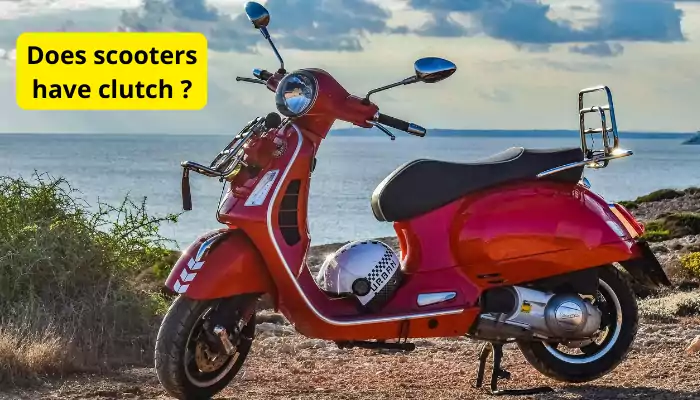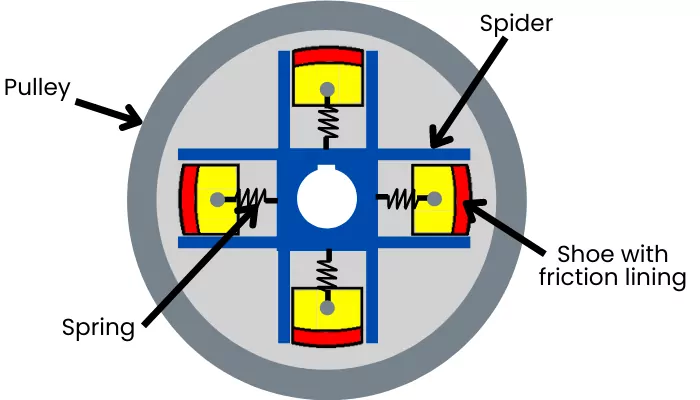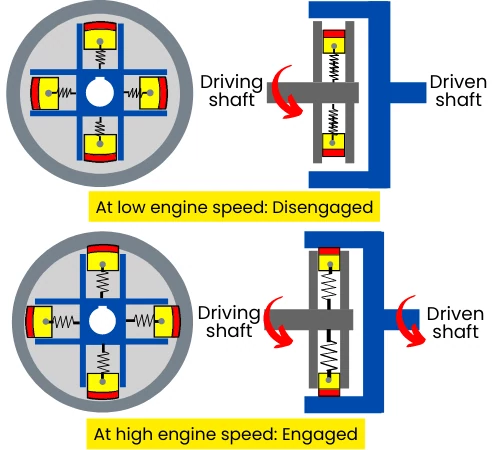Yes, the scooters have a centrifugal clutch to facilitate engagement and disengagement between the rear wheel and the engine depending on the engine speed. It never has a pedal or a lever for manual operation, which raises doubts about the presence of a clutch in a scooter.

Does scooters have clutch?
Yes, scooters have a clutch, but these are not manually operated like bikes or cars. In scooters, the manual clutch is replaced by the centrifugal clutch and CVT.
The centrifugal clutch controls the engagement and disengagement between the engine and wheels as per the engine speed. It disengages the wheel from the engine when the engine is at idling RPM and engages when the rider increases the engine RPM by twisting the accelerator.
Thus in scooters, the centrifugal clutch is only used to isolate the engine from wheels during an idle run or stopping the vehicle.
It is not used while changing the gear ratio of transmission as the scooter uses CVT to change the gear ratios.
Which type of clutch are used in scooter?
The scooters use the centrifugal clutch to engage or disengage the engine from the wheels. The schematic diagram of the centrifugal clutch is shown below.

As shown in the above figure, the centrifugal clutch consists of the following main components:-
1] Shoe:- The shoes move radially and engage with an inner surface of the pulley. It freely moves into the guideways of a spider.
2] Spider:- The spider guides the shoe in the radial direction and it is connected to the rear CVT pulley.
3] Spring:- The springs help to disengage the clutch during idle speed.
4] Pulley or clutch housing:- The pulley is connected to the rear wheel of the scooter and transmits the power to the wheel when it gets engaged with shoes.
The working of a centrifugal clutch depends on the principle of centrifugal force.
During idling when the centrifugal force acting on shoes is less than the spring force, the shoes remain in the disengaged position.

As the RPM of the engine increases, the centrifugal force acting on shoes increases above the spring force. Thus the shoes move outward and engage with the inner surface of the pulley and then the pulley also starts to rotate with the shoes.
Similarly while stopping the vehicle as the engine speed decreases, the centrifugal force acting on shoes decreases below the spring force. So that the shoes move inward and the clutch gets disengaged.
Why scooters doesnt have manually operated clutch?
The scooters don’t require manual clutches because of the following reasons.
1] No shifting of gears:
In a manual transmission, the rider has to use the clutch pedal while shifting the gears. But like a manual transmission, the scooter doesn’t require manual clutches for shifting the gears.
As shown in the below clip, the scooters use continuously variable transmission (CVT) for changing the gear ratios. The CVT changes the gear ratios automatically as per the engine acceleration, thus it doesn’t require any manual clutch.
2] No neutral or disengagement is required while stopping the scooter:-
While stopping a vehicle with a manual transmission, the driver has to shift the lever to the neutral position or he has to press the clutch to disengage the engine from further transmission.
In a scooter, the centrifugal clutch helps to disengage the engine from the wheels when the engine runs at idle RPM. Therefore to stop the scooter, the rider has to untwist or release the accelerator so that the engine speed gets lowered. At lower rpm, the centrifugal clutch becomes disengaged and the scooter stops.
Thus scooter doesn’t require a clutch to neutral or to disengage the engine while stopping.